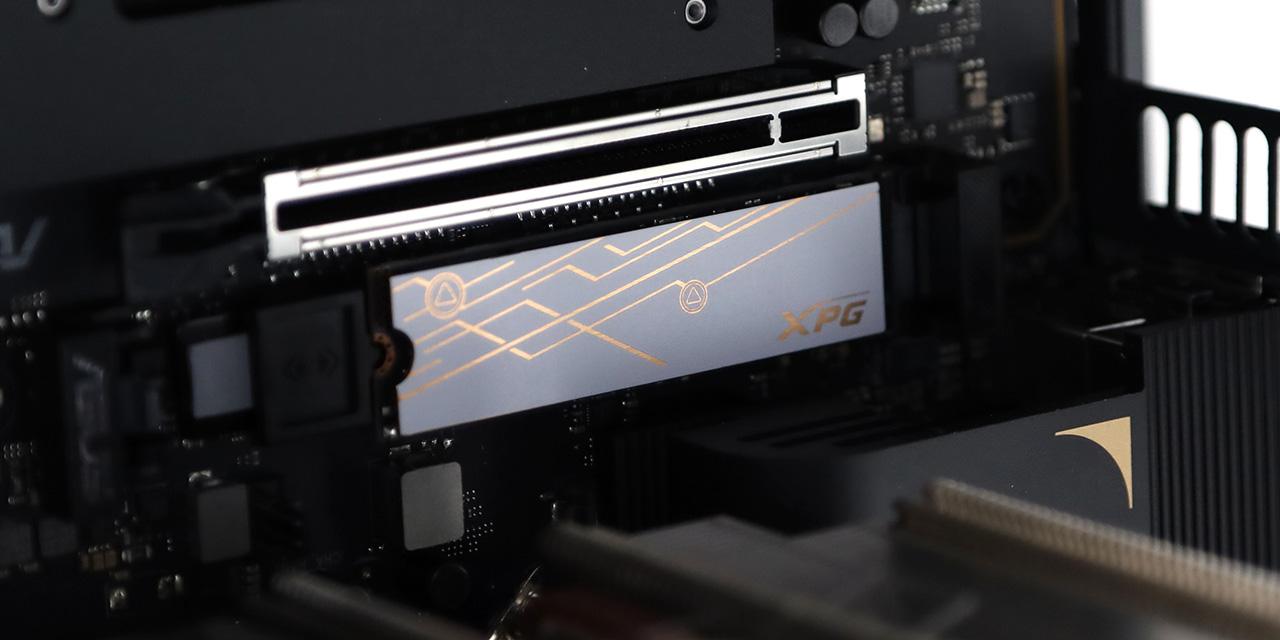Page 3 – Physical Look – Inside
After removing the side and top panels, we can see the inside layout of the Cooler Master MasterCase EG200. Unlike a conventional computer case, the PSU is located behind the front panel, so an extension cable is used to connect the power connector on the case and the PSU. There are two PCBs in the EG200. The one with a PCIe slot is for the bridging of Thunderbolt 3 and PCIe, and the other one is for the USB hub functionality. The USB hub board also connects to the front SATA port. As you can see, the Thunderbolt 3 functionality and the USB hub functionality of this case are provided by two independent modules for maximum performance.
The overall layout of this external GPU enclosure is well-designed. The graphics card with dimensions up to 325mm long, 54mm thick, 141mm wide is supported. The graphics card can be easily installed, since it is not blocked by the PSU or any other modules. One thing I would like to point out is the cable management of the EG200. All the cables in the case, except for the PCIe power cable, are tied to the chassis using twist ties instead of zip ties or Velcro straps from the factory. I guess Cooler Master just wants to give us the freedom to reroute the cables using the zip ties provided in the accessory bag. As for the PCIe power cable, it can be attached to the chassis with the Velcro strap that is already attached to the case.
The PSU inside the MasterCase EG200 is the Cooler Master V550 SFX Gold 550W, which is a lower power version of the V850 SFX Gold we reviewed a few months back. Thanks to the SFX form factor, the size of the EG200 can be small. According to the Cooler Master's website, the V550 SFX Gold is the first SFX power supply unit from the company. The PSU is targeted at mini-ITX systems, so it is reasonable to apply it to an external GPU case. It is worth mentioning that the V550 has an 80 Plus Gold efficiency rating, and it is a fully modular PSU with a 92mm FDB fan. The PSU has 100% Japanese capacitors inside. In terms of power, the 550W PSU is more than enough for the majority, if not all, of the graphics cards in the market today. The Thunderbolt 3 connectivity also allows a maximum 60W of power from the EG200 to be transferred to your laptop.
Now, let us take a closer look at the main PCIe board of the MasterCase EG200. The board is powered by the 24-pin motherboard power cable from the PSU. The main function of this board is to bridge the PCIe and the Thunderbolt 3 interfaces. The Intel JHL7440 controller is used to realize this bridging function. In this review unit, the JHL7440 is covered by the metal shield on the green PCB daughter board. The JHL7440 provides 40Gbps data rate, which can well-satisfy the bandwidth requirement of external graphics applications. The PCB design and build quality of the PCIe board looks good and I have no particular reason to believe otherwise.
Let us move on to the USB hub board. Again, the board itself is well-designed and well-built. The shields of the USB ports are firmly soldered to the PCB. There are two main chips on this board. One is the VIA Lab VL817 as the USB 3.2 Gen 1 Hub Controller. According to the data sheet, the VL817 supports any combination of devices up to SuperSpeed 5Gbps. The other main chip on the board is the VL711, which is also from VIA Lab. The VL711 is a “high performance, low power single chip USB 3.0 to SATA 6Gbps bridge controller designed for new generation external storage devices”. According to its data sheet, the VL711's integrated in-house SATA 6Gbps host controller can work with all SATA-based storage devices and can connect at SATA 6Gbps, SATA 3Gbps, or SATA 1.5Gbps automatically.
There is one case fan included in the MasterCase EG200. From the product's specification, it is a 92mm slim 2600RPM PWM fan. In terms of size, the 92mm diameter is expected due to the small form factor of the case. According to Cooler Master website's specification table, the installed fan has PWM functionality, which can also be confirmed by the fact the fan connector has 4 pins. However, neither of the two fan headers on the PCIe board has the corresponding header. I am not sure why Cooler Master gives us a fan with PWM while the control board does not have a PWM pinout for the fan. The other thing is, the case supports another 92mm fan, but it is not likely you can get another identical fan from Cooler Master in retail. If you want to have a dual fan setup, you have to buy something non-matching.
Page Index
1. Introduction, Packaging, Specifications
2. Physical Look - Outside
3. Physical Look - Inside
4. Benchmarking and Conclusion





